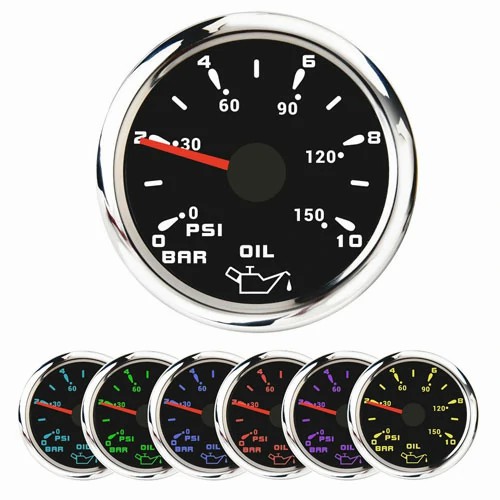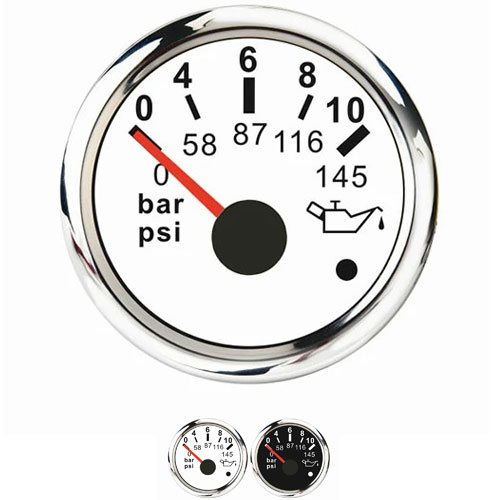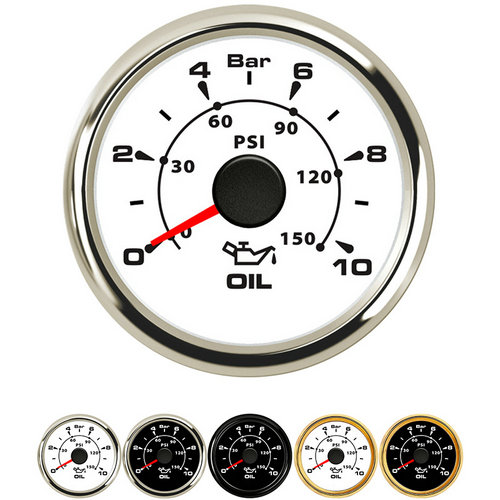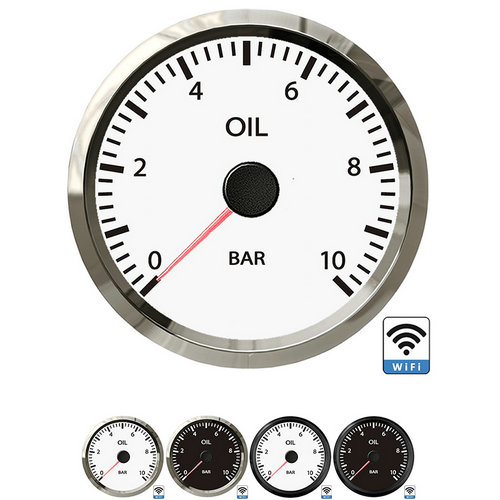installing mechanical oil pressure gauge
Installation of oil pressure gauge:
When installing the oil pressure gauge on the vehicle, pay attention to the insulation of the terminal and do not knock or bump it during disassembly. In order to ensure reasonable heating of the working support arm and compensation support arm of the bimetallic sheet of the sensor, its installation is directional, and the arrow symbol on the sensor shell should be upward during installation, with an error of no more than 30 °. Both the oil pressure gauge and the sensing plug are not allowed to be violently impacted. Vibration can cause relative changes in the position of each component, affecting the pressure value between the contacts, and causing inaccurate indication of the gauge. Under normal circumstances, when the ignition switch is not connected to the power supply, the pointer should be positioned outside the "0" position. When the ignition switch is turned on but the engine is not started, the pointer should point to the "0" position; After the engine starts, the gauge needle will point to the corresponding pressure scale value as the oil pressure in the main oil duct changes.
When installing a sensor, it is important to ensure that the arrow symbol on its casing is not installed incorrectly. When the indicated value of the oil pressure gauge is inaccurate, it is necessary to check whether the arrow symbol on the sensor casing is installed incorrectly or if its contacts are burned, and promptly repair it.
The graduation numbers and symbols on the pressure gauge dial should be complete and clear. The dial graduation scale should be evenly distributed, with a center angle of 270 °. The pointer of the pressure gauge should extend into all graduation lines, and the width of its pointer indicating end should not be greater than 1/5 of the minimum graduation interval. The distance between the pointer and the plane of the dial should be within the range of 1-3mm. For cases with an outer diameter of 200mm or more (including 200mm), the distance between the pointer and the plane of the dial should be within the range of 2-4mm. A pressure gauge with a stop pin should have the pointer tightly against the stop pin when there is no pressure or vacuum, and the "shrinkage" should not exceed the specified allowable error. The pressure gauge casing should be able to protect the internal components from contamination, and the pressure gauge should be equipped with a safety hole, which should be equipped with a dust proof device.
 English
English 






Get a Quote / Info